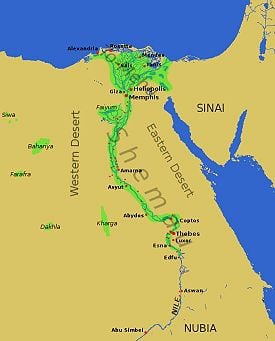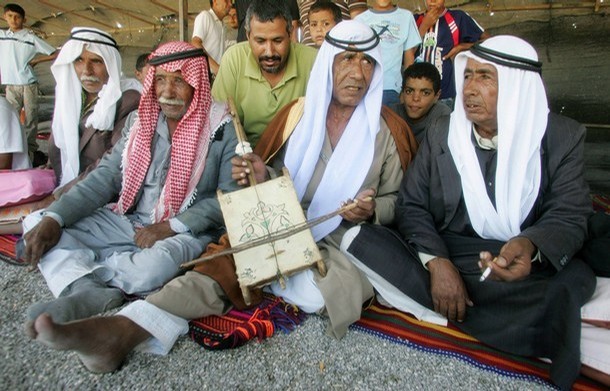Although the majority of Egyptians live along the Nile River Valley, more than 90% of Egypt is covered in desert areas. On the map below, you can see that there are separate deserts (i.e. Western Desert, Eastern Desert, etc...), but they are a part of the Great Sahara.


Here are some interesting facts about the Sahara Desert:
1. The Sahara Desert is the world’s largest "hot"desert and one of the harshest environments on the planet. The largest desert overall is actually Antarctica. At 3.6 million square miles (9.4 million square kilometers), the Sahara, which is Arabic for "The Great Desert," engulfs most of North Africa.
2. The Sahara is so big that you could fit the continental United States inside and still have a few thousand square miles of desert left over.
3. It is home to about two million people.
4. Temperatures can get as hot as 136 degrees and can often reach below freezing temperatures at nighttime.
5. There are close to 1,200 species of plants that grow in the desert.
6. Over 2% of the Sahara is covered in Oases.
People who live in the desert areas are called Bedouins. They have their own unique culture and many live in an Oasis like the ones you see in the map below (i.e. Siwa, Al-Faiyum, Sinai Peninsula, etc...).

Altogether the Bedouin population is about 4 million and their communities are in many countries, besides Egypt, including Syria , Israel , Jordan , Saudi Arabia , Yemen and Iraq in the Middle East and Morocco , Sudan , Algeria , Tunisia and Libya in North Africa .
Their numbers are decreasing and nowadays there are approx. only 5% of Bedouins still live as pastoral nomads in all of the Middle East . Some Bedouins of Sinai are still half-nomads.
Bedouins have different facial features by which they can be distinguished from other Egyptians and also they generally dress differently.
The Bedouin men wear long 'djellabaya' and a 'smagg' (red white draped headcover) or 'aymemma' (white headcover) or a white small headdress, sometimes held in place by an 'agall' (a black cord).

The Bedouin women usually wear brightly colored long dresses but when they go outside they dress in an 'abaya' (a thin, long black coat sometimes covered with shiny embroidery) and they will always cover their head and hair when they leave their house with a 'tarha' (a black, thin shawl). Traditionally a woman's face was hidden behind a highly decorated 'burqa'ah' but this is now only seen with the older generations. The younger generations cover their face simply with their 'tarha' (shawl).


The Bedouins have a rich culture and their own Arabic ‘Bedawi’ language, which has different dialects depending on the area where they live.
Here is a video clip on one Egyptian Bedouin Tribe in the Sinai
The first converts to Islam came from the Bedouin tribes and therefore (Sunni) Islam is embedded and deeply rooted in the Bedouin culture. Prayer is an integral part of Bedouin life. As there are no formal mosques in the desert, they pray were they are, facing the Ka’aba in Mecca and performing the ritual washing, preferably with water but if not available they ‘wash’ with sand instead.
'The Bedouin' is generally open-minded and interested in what is going on in his close and far surroundings since this kind of knowledge has always been a vital tool of survival. At the same time, the Bedouins are quite suspicious and alert keeping a low profile about their personal background.
Modern Arab states have a strong tendency to regulate their Nomadic lifestyle and modern society has made the traditional Bedouin lifestyle less attractive, since it is demanding and often dangerous, so many Bedouins have settled in urban areas and continue to do so.
The Bedouin people are faced with challenges in their lifestyle, as their traditional Islamic, tribal culture has begun to mix with western practices.
Men are more likely to adjust and interact with the modern cultures, but women are bound by honor and tradition to stay within the family dwelling and therefore lack opportunity for advancement.
Today unemployment amongst Bedouin people is very high. Only few obtain a high school degree and even fewer graduate from college.
I hope this blog post gives you a better idea of the Bedouin culture and life outside the Nile River Valley.
*Most of the information provided for this post came from http://www.bedawi.com/Bedouin_Culture_EN.html
No comments:
Post a Comment